There’s a quote attributed to Oliver Wendell Holmes, Jr. that says the following: “The human mind, once stretched by a new idea, never regains its original dimensions.”
That’s what the TED conferences do: they stretch the dimensions of your mind. Each TED speaker has 18 minutes to present an idea worth spreading in the most innovative and impactful way they can. Speakers range from Google founders Larry Page and Sergey Brin, to a young man living in a remote village in Malawi who–at the age of 14– built a windmill for his family, from an old textbook.
Below you’ll find what I consider to be the 20 best TED talks. This is a massive post, so I suggest you bookmark it, and then come back to it when you have time to select the talks that interest you.
Jill Bolte Taylor’s Stroke of Insight
Dr. Jill Bolte Taylor is a Harvard-trained brain scientist who suffered a stroke in 1996, at the age of 37, in the left hemisphere of her brain. She spoke of her experience at TED and wrote a memoir about the experience titled “My Stroke of Insight: A Brain Scientist’s Personal Journey”.
Although the talk is, in part, about a brain scientist observing firsthand what it’s like to have a stroke, it goes much deeper than that. Dr. Taylor also explains her discovery that through the right hemisphere of the brain, the part of her brain that was untouched by the stroke, inner peace is just a thought away.
Tim Brown on Creativity and Play
Tim Brown, one of the founders of the award-winning design firm Ideo, speaks about the powerful relationship between creative thinking and play. Tim argues that a playful environment which relaxes natural inhibitions is more conducive to creative and useful ideas than the very “serious” environment you find in most companies.
He explains that creative companies often have symbols in the workplace that remind people to be playful and that it’s a safe, permissive environment. People need to know that breaking the old rules and norms that are no longer effective is encouraged.
Elizabeth Gilbert on Nurturing Creativity
Elizabeth Gilbert–author of the bestseller “Eat, Pray, Love”–explains that in ancient Greece and Rome people did not believe that creativity came from human beings. Instead, they believed that there was a divine attendant spirit that helped human beings in their creative endeavors. The Greek “Daemon” and the Roman “Genius” were magical entities that lived in the walls of an artist’s studio and would come out and invisibly help the artist with his work.
Elizabeth argues in her Ted talk that adopting a belief similar to that held by the Romans and Greeks is a good way for a creative person to establish some distance from their work.
Daniel Pink – The Surprising Science of Motivation
Daniel Pink– author of Drive: The Surprising Truth About What Motivates Us–makes the case in his book and in his TED talk for rethinking our reliance on external rewards as our motivation. Popular wisdom indicates that in order to get more out of employees in terms of quantity and quality, you need to give them external rewards, such as cash bonuses.
However, Pink explains that rewards work well for tasks with a simple set of rules and a clear destination to move toward. By their very nature, rewards narrow our focus and concentrate the mind. That is, they work well for routine, rule-based, left-brained work–which includes things such as certain kinds of accounting, certain kinds of financial analysis, certain kinds of computer programming, and so on. These are the kinds of jobs that are easy to automate and outsource.
For tasks that require creativity and innovation, rewards produce the opposite of their intended result: they dull thinking and block creativity. People who are very creative rely on intrinsic motivation, instead of external rewards.
Tony Robbins – Why We Do What We Do and How We Can Do It Better
Personal development author and speaker Anthony Robbins explains in his TED talk that when people fail to achieve something, the defining factor is a lack of resourcefulness. He adds that if people are resourceful enough–if they’re creative and determined enough–they’ll find a way to achieve what they’re after.
In addition, Robbins explains that our ability to be resourceful largely depends on what we choose to focus on. Every moment of your life you’re making the following three decisions:
- What am I going to focus on?
- What does it mean? (The minute you focus on something you give it meaning. And whatever meaning you give to it produces emotion.)
- What am I going to do? (Emotion then drives you toward taking action.)
Robbins then gives examples of how these three decisions shape your life. As an aside, during the talk there’s a great exchange between Robbins and Al Gore, who’s sitting in the audience.
John Gerzema -The Post-Crisis Consumer
John Gerzema explains in his TED talk that overall, society is moving from mindless spending, to mindful consumption. People are moving toward aligning their values with their spending, and driving businesses to not just be about more, but to be about better.
Gerzema identifies four major cultural shifts driving new consumer behavior, and discusses how businesses are evolving to meet new consumer demands. These four major shifts are the following:
- Tendency toward a liquid life: the less excess that you have around you, the more nimble footed you are.
- Move toward ethics and fair play: people are paying attention to how the companies that they buy from conduct themselves in the marketplace.
- Durable living: consumers want more value out of the goods that they buy; they want longer lasting, high quality goods.
- Returning to the fold: more and more, people are buying local and are banding together with their communities to get what they want out of the marketplace.
Eve Ensler – Embrace Your Inner Girl
This is fantastic! Eve Ensler is famous for creating the play “The Vagina Monologues”. She also launched V-Day, a global non-profit that works to end violence against women and girls around the world. In her TED talk she declares that there’s a girl cell in all of us, women and men. This cell, or grouping of cells, gives us compassion and empathy, it gives us vulnerability, it’s intuitive, it makes us passionate and emotional, and it’s central to the evolution and survival of our species.
However, patriarchy has been killing off the girl cell, which is essential for balance and wisdom. This suppression of the girl cell has led us to where we are now: extreme forms of violence in many parts of the world, horrific poverty, genocide, mass rapes, the destruction of our planet, and so on.
Ensler goes on to tell stories about girls around the world who have overcome shocking adversity and violence, to reveal the strength of being a girl. She makes a call for everyone to embrace their inner girl. Ensler then wraps up by performing her monologue, “I Am an Emotional Creature”.
Matthieu Ricard: Habits of Happiness
Buddhist monk Matthieu Ricard explains in his TED talk that we can train our minds in habits of happiness. He explains that often, in our quest for happiness, we look outside of ourselves. We think that if we get this or that, we’ll be happy. However, our control over the outside world is limited, temporary, and often illusory. So, if our happiness relies on something external, we’re on shaky ground.
The way to achieve happiness–which is a sense of well-being, serenity, and fulfillment–, is to look inside of ourselves, instead of looking outside. We need to realize that it’s the mind that translates what happens outside of us as either joy or suffering. Therefore, it all comes down to training the mind. Ricard adds that the best way to train the mind is through meditation.
Steven Johnson – Where Good Ideas Come From
Steven Johnson is author of the book, Where Good Ideas Come From: The Natural History of Innovation. He argues in his book, and in his TED talk, that most ground-breaking ideas start out as “slow hunches”. Good ideas spend a long time–even years–incubating; they spend a long time dormant in the background.
In order for a hunch to turn into a great idea, it has to collide with other hunches. These “other hunches” can be yours–by mulling over your idea you come up with new hunches–, or they can be other people’s hunches. Johnson argues that many of the great ideas of the past came about as a result of the best minds of the time meeting at coffee houses to discuss and debate their ideas. This allowed for the collision of hunches, which led to breakthrough ideas.
Johnson goes on to say that a key component of being more creative is building environments like the coffee houses, which lead to innovation. In addition, in many respects, the Internet is today’s coffee house. He concludes by stating that “Chance favors the connected mind”.
Bill Gates on Mosquitoes, Malaria and Education
Bill Gates explains in his TED talk that there are major world problems that are not getting worked on naturally. That is, the market does not drive governments, scientists, thinkers, and so on, to find a solution for these problems. Two of these problems are malaria and education.
Gates points out that more money goes into the research and development of baldness drugs than to the development of drugs that cure diseases such as malaria. The reason is obvious: rich men are afflicted with baldness, whereas the one million people who die of malaria each year, and the other 200 million people that are affected by it, are poor and live in developing countries.
In the area of education, Gates asks the following question: “How do you make a teacher great?” He argues that we should be investigating what qualities and characteristics the great teachers have, so that we can get all teachers to replicate them. In addition, we should find ways to retain the great teachers. Gates explains that neither of these things is being done. But he remains optimistic.
J.J. Abrams – The Mystery Box
J.J. Abrams, co-creator of the hit TV show “Lost” and director of “Mission Impossible III”, explains in his TED talk that when he was a kid he would often go to the Lou Tannen Magic Store in New York City. One time he went to the magic store and bought a “mystery box”. A mystery box is when you buy a box full of items–in Abram’s case, magic tricks–sight unseen. That is, when you purchase the box, you don’t know what’s inside ($15 buys you $50 worth of magic).
Even though Abrams bought his mystery box decades ago, and he keeps it on a shelf in his office, he’s never opened it. For him, the mysteriousness of the box far outweighs the value of any magic tricks it may contain. The box–which has a giant question mark on one side–represents infinite possibility, hope, and potential.
Abrams explains that mystery is a catalyst for imagination. Stories are mystery boxes; you read until the end to discover what happens. In TV, the first act is called the teaser. It raises questions which are going to be answered during the rest of the show. People are drawn to mystery. Abrams encourages those watching his talk to ask themselves how they can use mystery to spark their creativity.
David Gallo – Underwater Astonishments
David Gallo explains that we’ve only explored about 3% of what’s out in the ocean (his talk was in 2007). The oceans contain the earth’s highest mountains and deepest valleys, underwater lakes, underwater waterfalls, and more life and more diversity of life than what can be found in the tropical rainforest. The 97% that we haven’t explored yet is either empty, or full of surprises. This talk has great footage of amazing sea creatures.
William Li – Can We Eat to Starve Cancer?
Angiogenesis is the process our body uses to grow new blood vessels. A typical adult has 60,000 miles worth of blood vessels. The smallest blood vessels are called capillaries–we have 19 billion of them in our bodies–, and they’re the vessels of life; however, they can also be the vessels of death. We get most of our blood vessels in the womb. Blood vessels grow in adults only under special circumstances, such as when we have an injury.
The body has the ability to regulate the amount of blood vessels that are present at any given time, through an elaborate system of checks and balances. When we need a burst of blood vessels, the body can do this by releasing stimulators. When those excess blood vessels are no longer needed, the body prunes them back.
However, sometimes there’s a defect in the system, and the body can’t prune back excess blood vessels, or it can’t grow new ones at the right place and at the right time. This causes disease; there are about 70 diseases that have an imbalance in angiogenesis as their common denominator. Cancer is one of these diseases.
Cancers start out as a small, microscopic nest of cells. This nest of cells can’t get any larger, because it doesn’t have a blood supply; so it doesn’t have enough oxygen or nutrients to grow. Although most people have microscopic cancers in their bodies after a certain age, most will never grow to be dangerous. This is because of the body’s ability to balance angiogenesis, which prevents excess blood vessels from growing and feeding cancers.
One way to treat cancer, Li explains, is to cut off the blood supply. However, Li argues that instead of concentrating on curing cancer once it happens, we should concentrate on preventing cancer. Li goes on to say that diet accounts for 30 to 35% of environmentally caused cancers. So Li asked, “What could we add to our diet that would prevent our bodies from creating the blood vessels that feed microscopic cancers?” That is, “Can we eat to starve cancer?” The answer is, “yes”.
Here are some examples of foods which inhibit abnormal angiogenesis:
- Red grapes
- Strawberries
- Soy beans
- Green tea
- Lemons
- Apples
- Nutmeg
- Tomatoes
Li explains more about these foods, and their role in preventing cancer, in his talk.
Brian Skerry Reveals the Ocean’s Glory, and Horror
Brian Skerry is an underwater photographer and photo journalist for National Geographic Magazine. Through his photographs he brings attention to the pressing issues which are endangering our oceans.
The first issue that Skerry addresses in his TED talk is how harp seals are being affected by global warming. Pups need a solid platform on which to nurse from their mothers for 12 days after they’re born; if they don’t get 12 days, they fall into the ocean and die. Because the ice is getting thinner, the pups are not getting the 12 days that they need and the pup mortality rate is rising dramatically.
Skerry points out that studies show that 90 percent of large fish–tuna, billfish, and shark, –have disappeared from the world’s oceans in the past half century as a result of industrial fishing. So he decided to take pictures that showed readers what was happening to marine wildlife around the globe.
Another issue that Skerry raises is how shrimp are caught. A net is dragged across the ocean floor; the net not only catches a few shrimp, but it also catches other fish and marine life in the process which have no commercial value. This bycatch, which dies in the process, is dumped back into the ocean as waste.
Skerry also covers other marine creatures that are at risk. However, he ends his TED talk on a positive note. There are places on earth where stocks of marine life which had been declining rapidly are back on the rise, after protectionist measures have been taken. This gives us hope for the future of our oceans, if we take action to protect marine life now. We have to be good custodians of the sea.
William Ury – The Walk From “No” to “Yes”
William Ury–a member of the “Harvard Negotiation Project”–has spent many years involved in the conflict in the Middle East. He speaks in his TED talk about the Abraham Path Initiative which he started.
The purpose of the Abraham Path Initiative is to inspire the creation of a permanent route of tourism, and pilgrimage, following in the footsteps which the prophet Abraham took 4,000 years ago. Abraham is the father of the Abrahamic religions, which include Judaism, Christianity, and Islam.
The idea is to use Abraham as a symbolic figure-as a “third side”, to use William Ury’s term-in order to find a common ground on which the different religions of the Middle East can walk together in a spirit of respect, hospitality, and friendship. The initiative will also promote ecotourism in the area, which will help in the economic development of the rural communities which exist along the Abraham Path.
The Abraham Path is also known as Masar Ibrahim al Khalil, or just Masar (“masar” means “path” in Arabic). The path begins in Turkey and takes you through Syria, Jordan, the Palestinian Territories, and Israel. Ury believes that Abraham’s Path is the key to creating sustainable peace in the Middle East.
Mihaly Csikszentmihalyi: Creativity, Fulfillment and Flow
Positive psychologist Mihaly Csikszentmihalyi is author of the book, “Flow: The Psychology of Optimal Experience”. In his TED talk he describes the state of ecstasy known as the flow state, which is associated with very high creativity, and he explains how to enter it.
Csikszentmihalyi explains that the nervous system is incapable of processing more than 110 bits of information per second. If you’re listening to someone speak, you need to process about 60 bits of information per second in order to understand what they’re saying. This is why if there are two people talking to you at the same time, you can’t listen to both of them and understand what both are saying.
He then goes on to explain that when you’re completely involved in the process of creating something new you don’t have enough attention left over to monitor how your body feels–the fact that you’re hungry or tired, and so on–, or to think about the problems that you’re having at home, or the spat that you had with a colleague earlier that morning.
People who enter the flow state often report that when they enter this state it’s as if they don’t exist. This is due to the fact that they’re so engrossed in the creative endeavor, that they have no attention left over to think about themselves and feel that they exist.
Ken Robinson – Do Schools Kill Creativity?
Ken Robinson argues in his TED talk that, today, creativity is as important in education as literacy. However, the way in which the educational system is set up, we’re educating children out of their creative capacity. He refers to a quote attributed to Pablo Picasso by saying that all children are born artists; the challenge is for them to remain artists as they grow up, given the way in which they’re schooled.
For example, Robinson explains that if you’re not prepared to be wrong, then you’ll never come up with anything original. Kids will risk being wrong; but by the time they grow up, most of them have lost this capacity. They’ve become frightened of being wrong. We’re running the educational system in such a way that we’re stigmatizing making mistakes.
Robinson argues that the school system creates people who live in their heads; and slightly to one side (since the subjects taught in school are mostly left-hemisphere subjects). He adds that the system is predicated on academic ability, because it was created to meet the needs of industrialism. You probably heard the following as a child:
- Don’t go into music; you won’t find a job as a musician.
- Don’t study painting; you don’t want to be a starving artist.
The consequence is that many highly talented, brilliant, creative people, think that they’re not very smart; the things that they’re good at were not valued in school. Robinson argues that we can’t afford to go on that way.
Stefan Sagmeister: The Power of Time Off
Designer Stefan Sagmeister explains in his TED talk that every seven years he closes his New York studio for a year-long sabbatical. During this sabbatical he pursues creative experiments and other things that are difficult to accomplish during a regular working year. He also uses this time to refresh his creative outlook.
Stefan explains that the value of taking time off is often overlooked. Here are two ways in which he benefits from taking sabbaticals:
- Taking a sabbatical improves the quality of his work, so he can charge more for it.
- The ideas that he comes up with during the following seven years have their roots in what he does during his year off.
Stefan indicates that we spend the first 25 years of our life learning, we spend the next 40 years working, and then tacked at the end we have about 15 years of retirement. Then he proposes that we take 5 years out of our retirement and intersperse them in between the working years. That is, the standard should be the following: work for 45 years, taking a year off every seven years.
Dan Gilbert: Why Are We Happy?
Dan Gilbert, author of “Stumbling on Happiness”, explains in his TED talk that the pre-frontal cortex of our brain is an experience simulator. We have the ability to have experiences in our heads before we try them out in real life. Humans spend a great deal of time imagining the future:
- What would it be like if this or that happened?
- How about if we bought this or that?
- And if we went here or there?
We do this in an attempt to shape our future and, in particular, to try and steer ourselves toward happy futures and away from unhappy ones. Gilbert explains that the problem is that people are really bad at predicting their emotional reactions to different events. That is, we’re terrible at knowing what will or will not bring us happiness.
Dan Ariely- Are We in Control of Our Decisions?
Dan Ariely, the author of “Predictably Irrational”, starts his TED talk by putting up a couple of slides with classic visual illusions. He then says that we should use these as a metaphor; if we make such predictable mistakes with our vision–which is something a very large portion of the brain is devoted to, and something we use all day–, then chances are high that we make all sorts of mistakes when it comes to things we’re not so good at, such as financial decision-making.
Ariely then moves on to cognitive illusions, or decision-making illusions. Many times we think that we’re in control, and that we’re making our own decisions. However, in reality, we just have the illusion of making decisions. Ariely uses organ donations as an example. The Netherlands has an organ donation rate of 28%. Belgium, which we think of as being culturally similar to the Netherlands, has an organ donation rate of nearly 100%. Why?
- The Netherlands has the following on the form that people fill out when they’re getting their license: “Check the box below if you want to participate in the organ donation program.”
- Belgium has the following on the form that people fill out when they’re getting their license: “Check the box below if you do NOT want to participate in the organ donation program.”
In both countries, most people just don’t check off the box. However, in the Netherlands this means that they’re not donating their organs, and in Belgium it means that they are. So the person who designed the form had a huge influence on the decision that was ultimately made by the people in these two countries on whether or not to donate their organs.
Ariely offers other examples that show that we are not as rational, or as in control of our decisions, as we think. He adds that we need to be more aware of our cognitive limitations.
Which are your favorite TED talks? Please share in the comments section.


Related Posts:
1. 18 Powerful Tips for Overcoming Procrastination
2. 101 Life Lessons – A Little Manual For Life
3. Rule of Adulthood: You Have to Rescue Yourself
4. 5 Life Lessons From Motivation Mega-Star Jim Rohn
5. Prosperity Tips – 18 Ways to Increase Your Wealth
Did you enjoy this article? Subscribe to “Daring to Live Fully” by clicking here and get free updates.

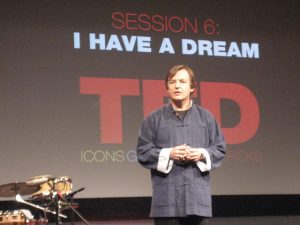
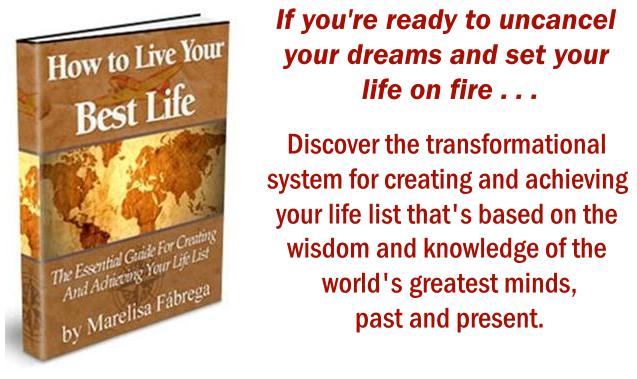
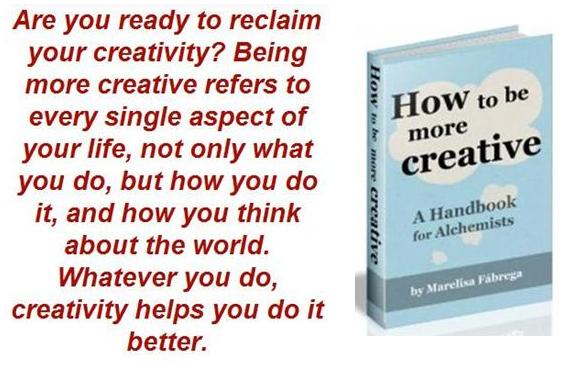
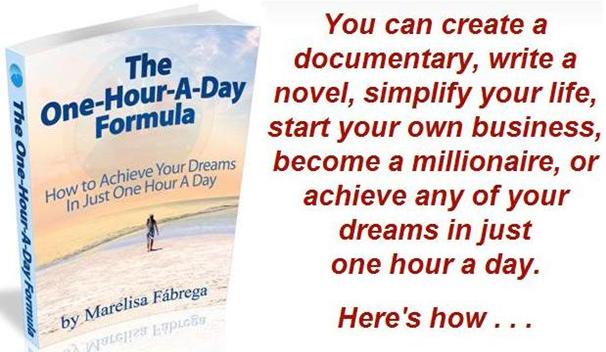
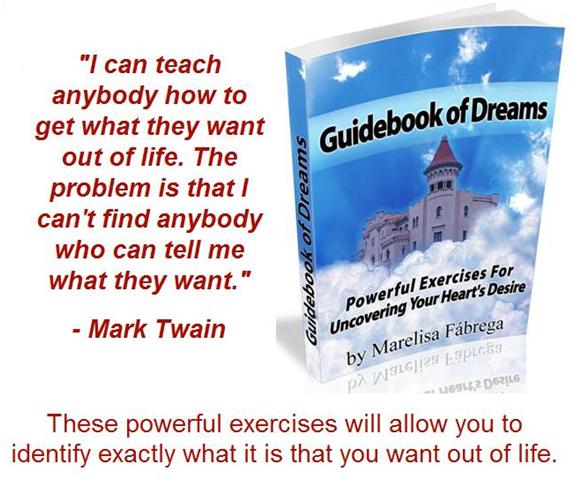



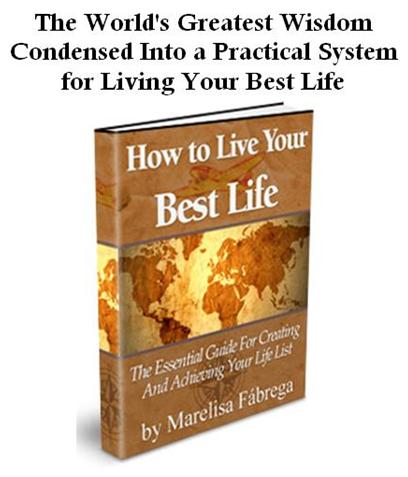







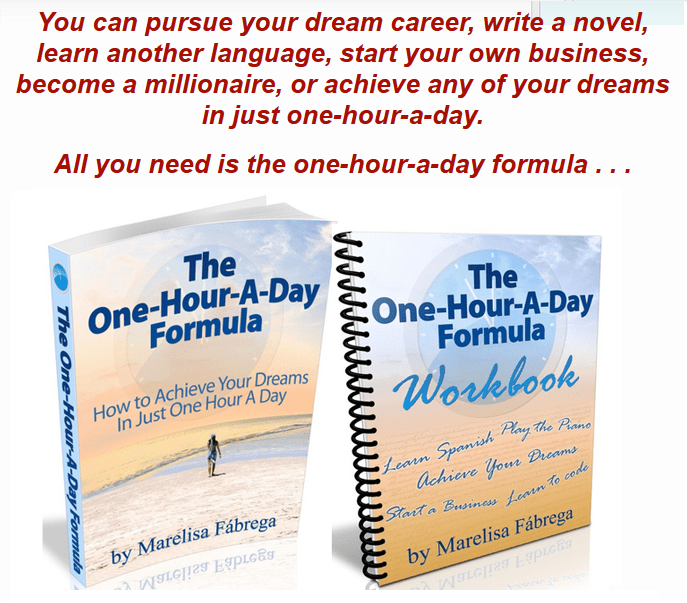





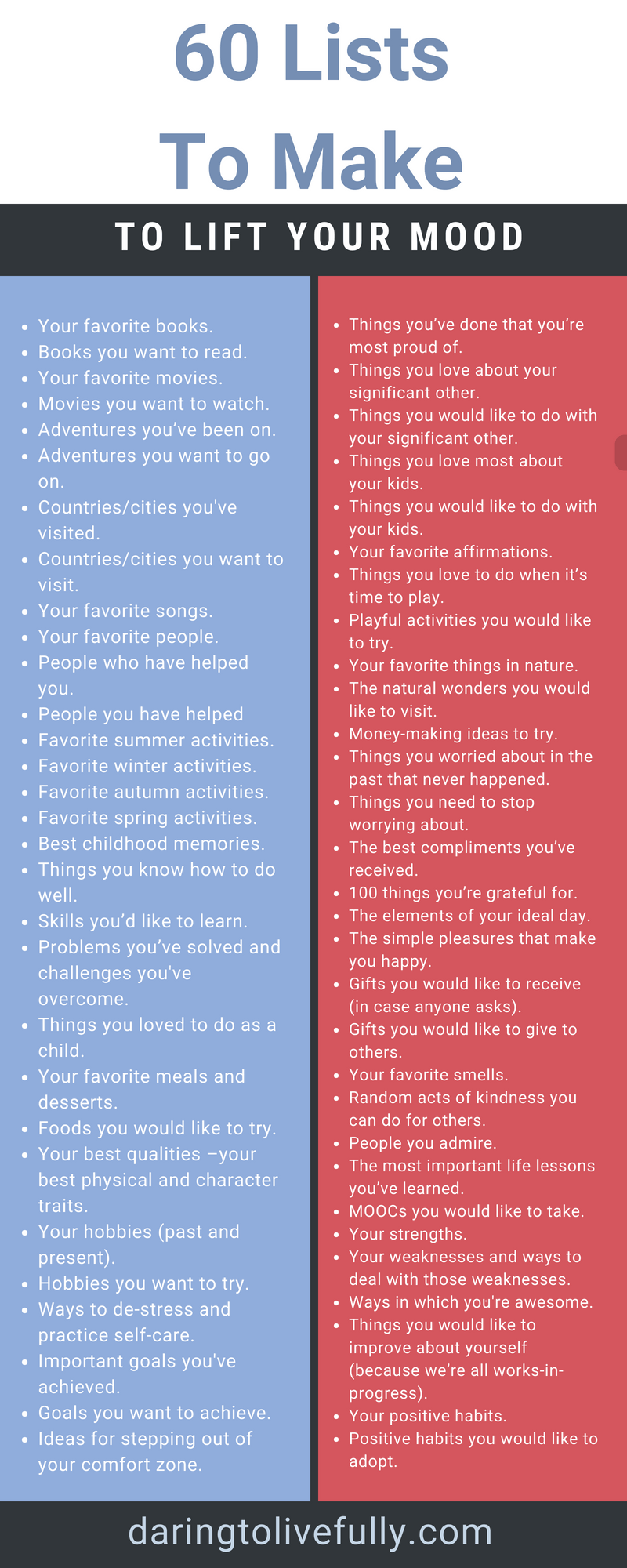



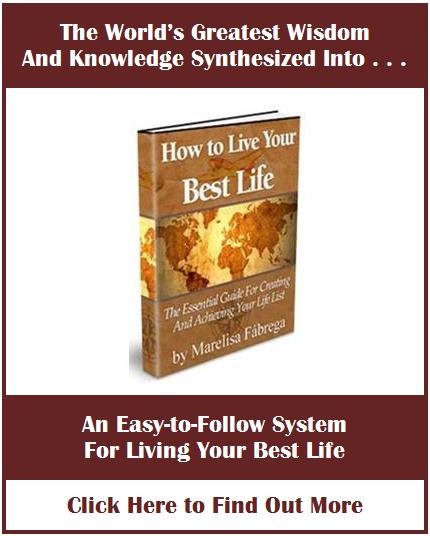

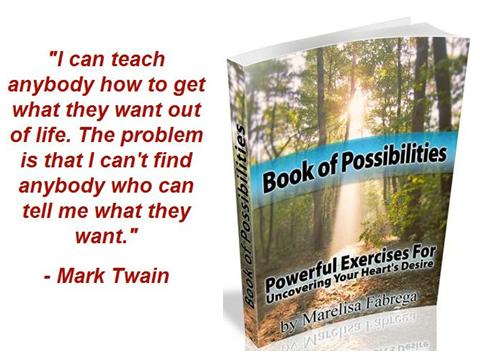

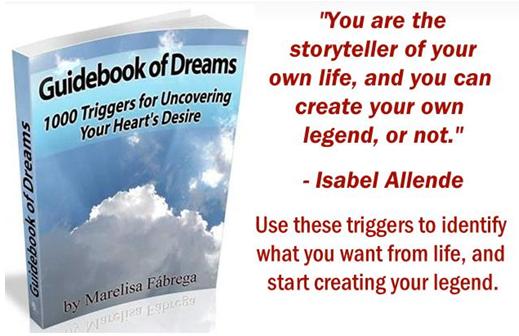



















































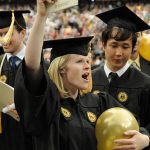






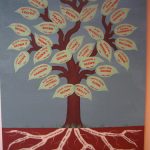


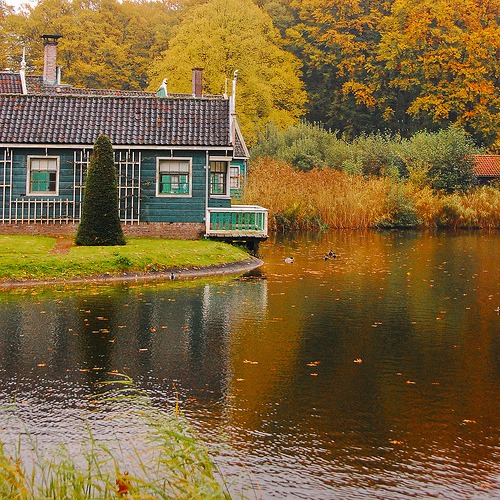



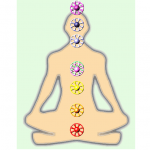


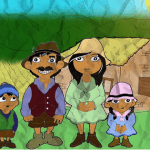


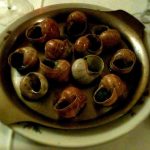














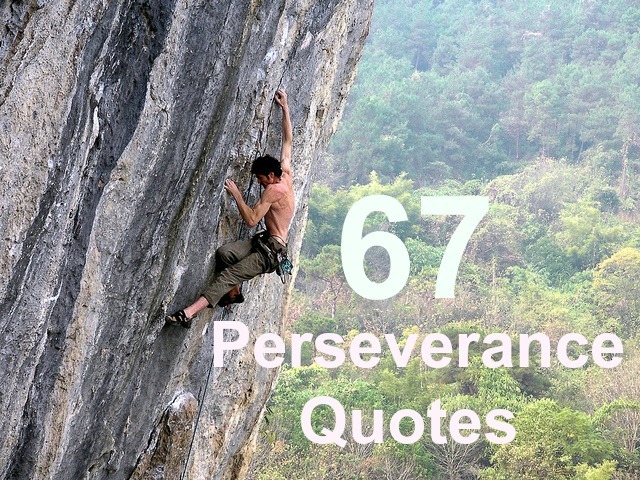
 Marelisa Fabrega is a lawyer and entrepreneur. She holds a Bachelor of Science in Business Administration from Georgetown University in Washington, D.C., as well as a Juris Doctor from the Georgetown University Law Center. You can learn more about her
Marelisa Fabrega is a lawyer and entrepreneur. She holds a Bachelor of Science in Business Administration from Georgetown University in Washington, D.C., as well as a Juris Doctor from the Georgetown University Law Center. You can learn more about her 





